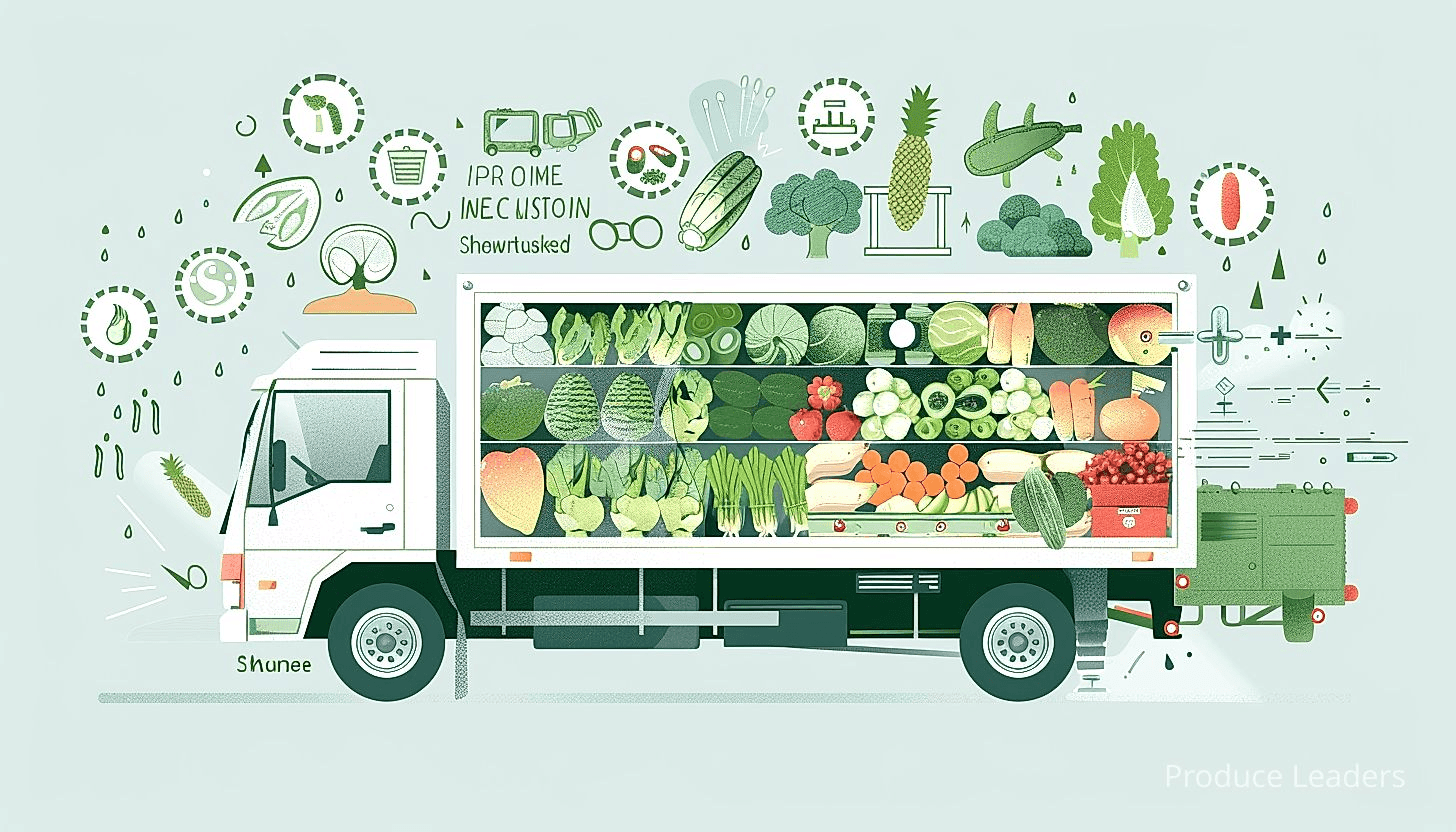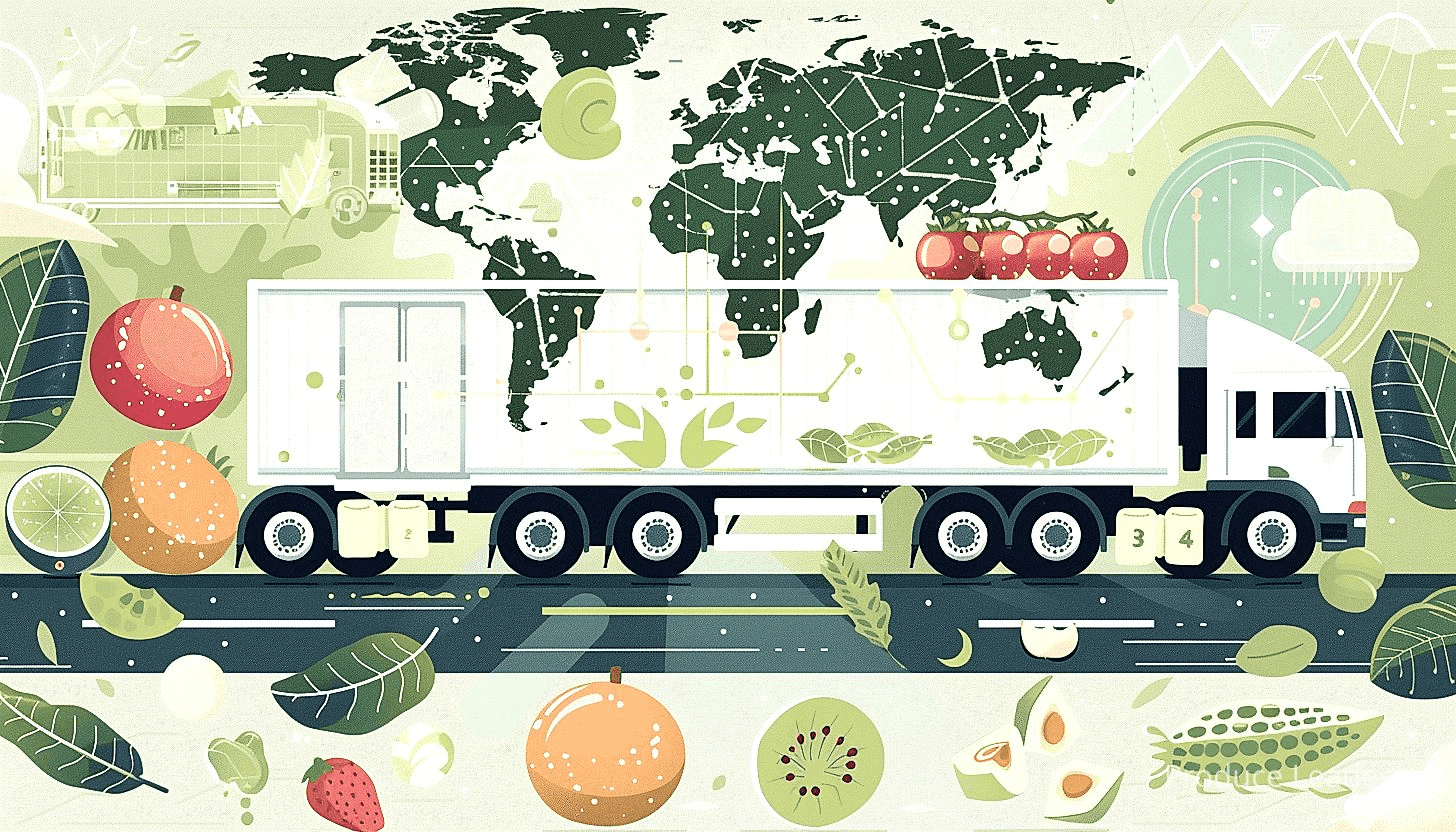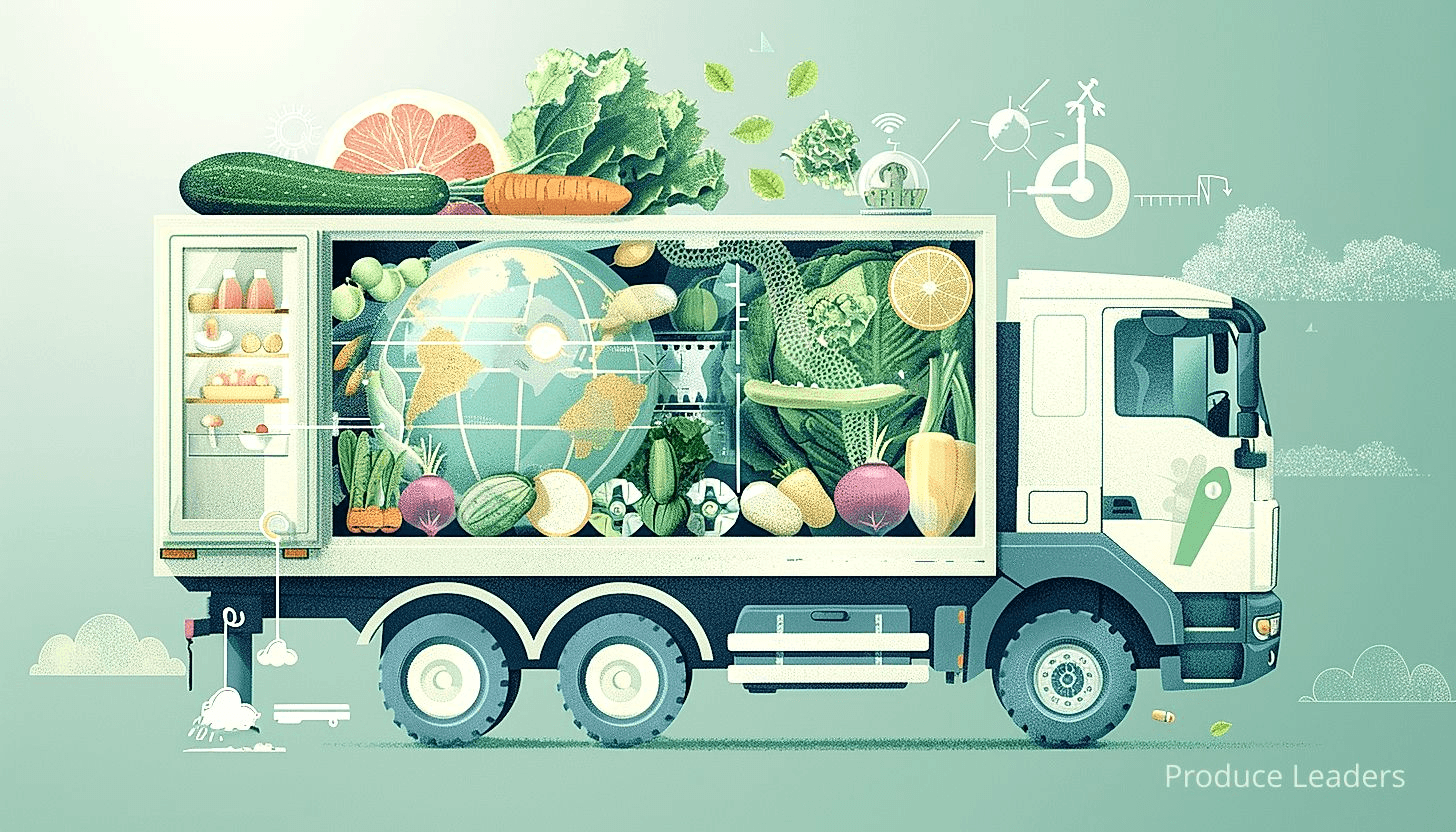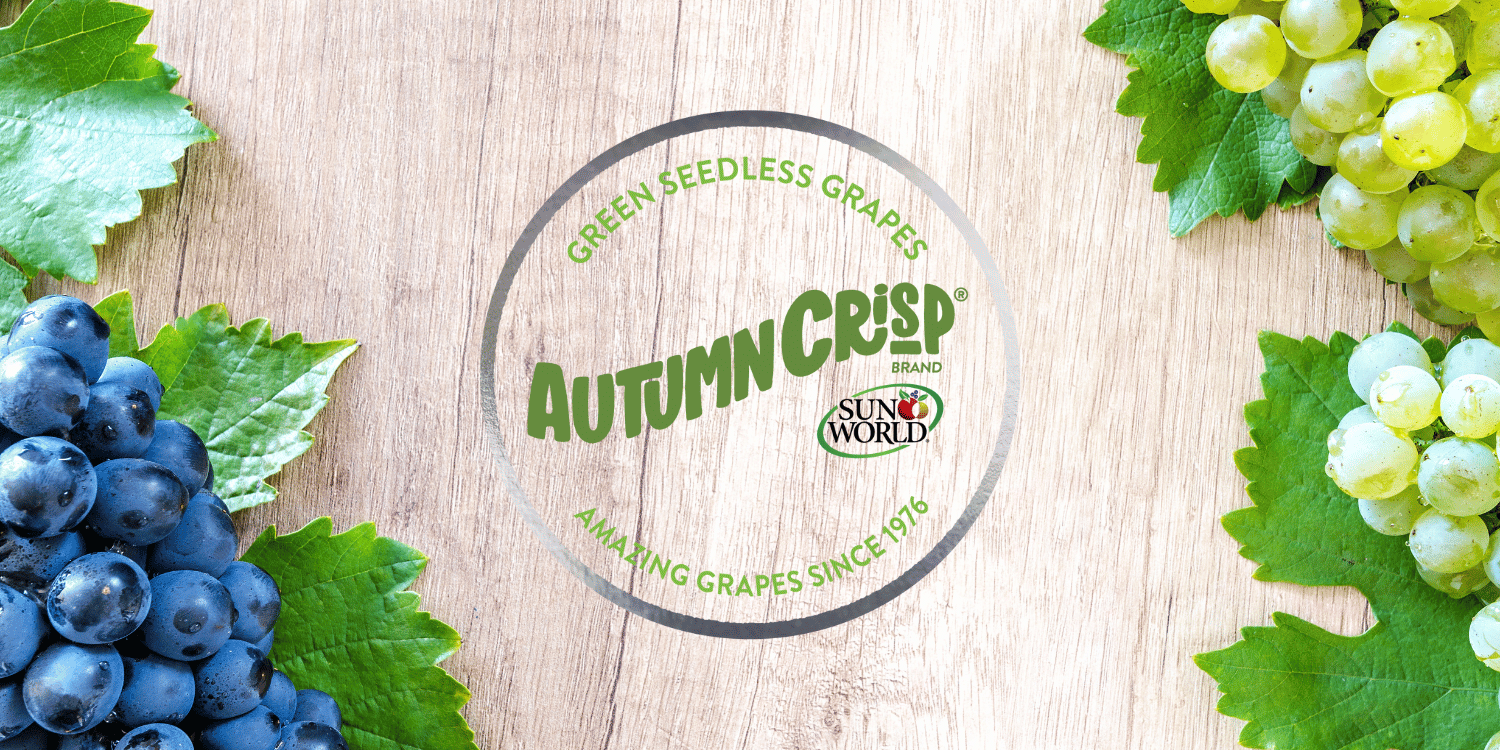Managing fresh produce from farm to market involves intricate logistical processes.
One of the critical aspects of this process is cold chain logistics.
Ensuring that produce maintains its freshness, while keeping rates of spoilage to a minimum, is an ongoing struggle.
Moreover, the aftermath of the global pandemic has exacerbated existing challenges.
This article aims to shine a spotlight on the numerous obstacles encountered in the complex realm of cold chain logistics.
From regulatory hurdles to technological advancements, a broad range of topics will be discussed in detail.
- Maintaining optimal temperatures for freshness during transit.
- Controlling humidity levels effectively for produce preservation.
- Predicting product shelf life accurately.
- Effectively managing timely delivery schedules.
- Adhering to international regulations and standards.
Undoubtedly, the challenges in cold chain logistics are vast and multidimensional.
In exploring them, we have only scratched the surface. The following sections will further unpack additional obstacles and potential solutions within this complex field.
These topics will include, among others, leveraging advanced technologies for temperature regulation, overcoming logistical hurdles in remote quarters, and innovative strategies to reduce waste.
Suffice it to say, there is a wealth of information yet to be covered; continue reading to gain a deeper understanding of cold chain logistics for produce.
Contents
- Challenges In Cold Chain Logistics For Produce
- 1. Maintaining Optimum Temperature Throughout Transit
- 2. Ensuring Humidity Control for Fresh Produce
- 3. Predicting Accurate Shelf Life of Products
- 4. Managing Just-In-Time Delivery Schedules
- 5. Coordinating International Regulations and Standards
- 6. Handling Abrupt Changes in Weather Conditions
- 7. Dealing with Equipment Malfunctions or Breakdowns
- 8. Ensuring Food Safety and Hygiene
- 9. Mitigating Produce Damage or Loss Risk
- 10. Managing High Energy Cost and Environmental Impact
- The Bottom Line
Challenges In Cold Chain Logistics For Produce
1. Maintaining Optimum Temperature Throughout Transit
In Short: Maintaining optimal temperature during transit in cold chain logistics is crucial to ensure freshness and quality of perishable goods. This can be achieved by using advanced technological solutions like IoT, careful management, and specially equipped storage solutions which can control and monitor environmental conditions throughout transit, despite diverse temperature requirements of produce and potential risks like heat leakage and traffic delays.
When it comes to cold chain logistics for fresh and perishable produce, the crucial aspect that one can’t overlook is the task of maintaining optimum temperature throughout the entire transit.
This involves not only the storage facilities and warehouses, but also the trucks, ships or planes used to transport the products.
Effective temperature control largely determines the freshness and quality of the product upon delivery to the customer.
This aspect of cold chain logistics can prove to be particularly challenging due to several reasons.
Firstly, different types of produce have different optimal storage temperatures.
It can be a daunting task to ensure that all varieties are stored at their ideal temperature while being transported through varied climates and weather conditions.
This may require using specially equipped warehousing solutions and transportation options that can control and monitor the environment throughout the entire transit process.
To illustrate the diversity of optimal temperature requirements, let’s consider a few examples:
- Apples, potatoes and pumpkins ideally should be stored at temperatures ranging from 30 to 40 degrees Fahrenheit.
- Strawberries, on the other hand, are best kept at slightly cooler temperatures around 32 to 34 degrees Fahrenheit.
- Tomatoes require a whole different set of conditions, ideally kept around 55 degrees Fahrenheit to prevent chilling injury and maintain flavor.
The subsystems and technologies used for cold storage and transportation need to be calibrated to adhere to these differing needs.
Another issue that arises in maintaining temperature during transit is the risk of heat leakage.
This happens when the cold air from the refrigeration unit is exchanged with the warm air outside, leading to a steady rise in the temperature inside the storage unit.
Addition of each load of produce can cause a brief rise in temperature, hence loading and unloading produce need to be done swiftly and efficiently.
The insulation properties of the containers and vehicles used also come into play here.
Improperly sealed doors or punctured insulation can lead to a significant rise in temperature, which may cause the produce to spoil.
Even factors such as traffic delays and mechanical breakdowns can lead to extended periods of exposure to higher temperatures, therefore plans to mitigate such situations should be proactively put in place.
For maintaining optimum temperature during transport, a combination of advanced technological solutions and careful management comes into play.
Most manufacturers now use wireless temperature sensors and IoT (Internet of Things) technologies to monitor the conditions inside the refrigeration units.
With precise, real-time information, operators can quickly intervene if deviations occur, thus preserving the quality and extending the shelf life of the produce.
2. Ensuring Humidity Control for Fresh Produce
In Short: Maintaining optimal humidity levels in cold chain logistics is crucial for preserving the freshness, nutrition, and shelf life of produce, but it poses significant challenges due to varying requirements, cost factors, quality degradation, and refrigeration dilemmas. Addressing these issues through understanding individual produce humidity needs, employing advanced technology, and efficient management can mitigate financial risks while ensuring long-term customer satisfaction and trust.
The efficacy of cold chain logistics significantly depends on maintaining an optimal level of humidity during transportation.
When it comes to preserving the freshness and nutritional quality of produce, humidity control is just as important as temperature management.
High levels of humidity can lead to the development of mold and bacteria, while low humidity levels may result in fresh produce losing its crisp and appealing texture.

Moreover, each type of fresh produce has a unique optimal humidity level, and failing to meet these individual requirements can dramatically shorten the product’s shelf life.
Hence, ensuring the accurate control of humidity in cold chain logistics is of paramount importance, although it may pose a considerable challenge.
The following points highlight some significant challenges with respect to humidity control in cold chain logistics:
- Varying Humidity Requirements: Different fruits and vegetables have distinct humidity requirements for an optimal shelf life. This makes it a painstaking task to ensure customized humidity conditions for each type of produce during transit.
- Cost factor: High-end equipment and technology may be necessary to control the humidity levels accurately, which could incur significant expenses.
- Loss of Quality: Inappropriate humidity levels can cause significant degradation in food quality, thereby impacting the business adversely.
- Refrigeration Dilemma: The process of cooling the air in refrigeration systems reduces its capability to hold moisture, which can significantly lower the humidity levels and lead to wilting and dehydration of some produce.
Undoubtedly, an efficient management of humidity within cold chain logistics not only prolongs the shelf life of fresh produce, but also maintains their nutritional value and visual appeal.
However, implementing such control can be technically complex and financially consuming.
Developing a deep understanding of the humidity requirements for each type of produce, the potential of advanced technology to meet these requirements, and the balance of cost-to-value benefits can assist in overcoming these challenges.
Furthermore, it is critical to consistently maintain the necessary humidity levels and monitor changes closely throughout the entire transportation process.
The complications brought about by inadequate humidity control can pose significant financial risks and reputational damage to businesses.
Nevertheless, addressing these challenges efficiently can ensure that the consumers receive fresh produce of the highest quality, thereby fostering trust and customer satisfaction in the long run.
Indeed, meeting humidity requirements for the preservation of fresh produce is a complex task and a significant factor in the success of cold chain logistics.
3. Predicting Accurate Shelf Life of Products
In Short: Accurately predicting the shelf life of products in cold chain logistics is a significant challenge due to influences such as harvest time, storage conditions, and transit disruptions. Utilizing advanced technologies and collaboration from all parties in the chain can enhance economic efficiency, reduce waste, and ensure quality produce delivery.
Within the scope of cold chain logistics, determining and predicting the accurate shelf life of products is a significant challenge.
Each type of produce has its own unique shelf life, influenced by various factors like harvest time, treatment procedures, temperature levels, humidity control, and many more.
A shift in any of these variables may considerably impact the expected shelf life of the produce, possibly resulting in loss of quality or wastage, affecting both the retailer and the consumer.
Incorrect prediction of the shelf life could lead to overstocking or under-stocking of produce, affecting the entire supply chain.
Moreover, more often than not, the estimation of shelf life is done at the source with the assumption that controlled conditions will be maintained throughout the supply process.
However, realistically, there are many potential disruptions and variables that may impact the shelf life during transit, storage, and retail.
We must consider the following main points that contribute to this complexity:
- The respective characteristics of each produce
- The conditions under which they are stored and transported
- The time at which they were harvested
- The distances they have to travel
Each of these points forms an integral part of with predicting the accurate shelf life of products and each needs its individual addressing, during transit and storage, to assure the maintenance of the product’s quality and freshness.
Advanced technologies and methodologies have come into use to assist in this aspect, including quality sensors, remote temperature monitoring, and data analysis algorithms, which aid in circumspectly predicting the potential shelf life of the produce.
Inevitably, the process of estimating shelf life in cold chain logistics has received immense attention due to its dire consequences on the profitability of the business, consumer satisfaction, and environmental impact.
However, despite these advances, there are still complexities in the procedure that pose a significant challenge in cold chain logistics.
This, in turn, puts a greater emphasis on the needs for a more innovative and foolproof solution to perfect the art of predicting produce’s precise shelf life.
Also, every part involved in the chain, from farmer to retailer, needs to contribute their part responsibly to ensure the efficacious delivery of fresh produce to the consumers.
Pro Tip: Predicting the accurate shelf life of products is crucial in cold chain logistics, with variables such as harvest time, storage conditions, and transport distances significantly impacting the shelf life, thereby affecting the product’s quality, profitability, and environmental impact.
The effective prediction of accurate shelf life can significantly enhance the economic efficiency of cold chain logistics and reduce the waste, ensuring profitability and sustainability in the long run.
Considering all these complexities and potential repercussions, predicting accurate shelf life of products is indeed a challenge in the field of cold chain logistics for produce.
4. Managing Just-In-Time Delivery Schedules
In Short: Just-In-Time (JIT) delivery management in cold chain logistics poses a significant challenge due to its reliance on accurate timing and forecasts, and the need to maintain low temperatures. Successful operation of this system necessitates accurate demand estimation, risk buffering strategies, precision equipment, effective coordination, and vigilant planning and risk management.
The management of Just-In-Time (JIT) delivery schedules presents a prominent challenge in the sector of cold chain logistics, particularly when dealing with perishable produce.
In the world of logistics, everything is about timing.
JIT is a system designed to increase efficiency by minimizing inventory and reducing waste, where goods are produced or delivered right at the moment they are needed.

This methodology is especially beneficial in the case of handling perishable produce as it reduces the storage time, and consequently, decreases the chance for produce to spoil.
However, the practical implementation of JIT heavily relies on the accuracy of forecasts and the time efficiency of every stage in the supply chain.
An unexpected delay at any point can lead to chain reactions and costly disruptions.
Therefore, let’s take a more in-depth look at some elements crucial to managing JIT delivery schedules in cold chain logistics:
- Accurate estimation of demand is imperative to avoid overproduction or underproduction. Both scenarios can lead to loss.
- Consideration of potential risks and the buffering strategies are key to preventing delays.
- The role of up-to-date and high-precision equipment should not be neglected.
- Tight coordination and communication within the supply chain are factors that can make or break JIT delivery.
Considering these factors, it’s understandable that logistics professionals might find JIT delivery management a daunting task.
Moreover, the complexity of JIT management multiplies when it comes to cold chain logistics.
The need to maintain a constant low temperature in the cold chain adds an extra layer of contingency.
Furthermore, the consideration of diverse climates and geographical differences across destinations make the likelihood of disruptions even higher.
Overall, managing JIT delivery schedules in cold chain logistics requires exquisite planning, rigorous risk management, and constant vigilance of the cold chain environment.
It is a dynamic process that presents numerous challenges but is, at the same time, crucial for the successful operation of cold chain logistics in the produce industry.
5. Coordinating International Regulations and Standards
In Short: In cold chain logistics, navigating and complying with various international regulations and standards proves complex, varying by country, constantly changing, and directly affecting the chain’s efficacy. An efficient, adaptable system within the chain is vital to avoid severe penalties for non-compliance, reduce food waste, and ensure the safety, quality, and freshness of produce throughout the transport process.
Navigating the complexity of international regulations and standards presents a significant challenge in cold chain logistics for produce.
Every country has its own distinct food safety standards and stipulations pertaining to the import and export of fresh produce.
For a cold chain logistics company, understanding, complying with and coordinating these various standards can be a herculean task.
The regulations are not static either; they evolve and change over time requiring constant monitoring and updates.
The importance of these regulations cannot be overstated, as non-compliance can lead to severe penalties and even total ban of imports.
Besides, each regulation often lays out specifics about the temperature and humidity levels that must be maintained, making them directly linked to the overall efficacy of the cold chain logistics.
This essentially mandates the need for a highly efficient and responsive system within the cold chain infrastructure capable of adjusting to the variable standards across countries and over time.
Let’s take a closer look at some of the key aspects of these standards that directly impact the cold-chain logistics:
- Quality Standards: Each country has specific quality standards that imported produce must meet.
- Hazard Analysis and Critical Control Points (HACCP): A systematic preventive approach to food safety, it addresses physical, chemical, and biological hazards as a means of prevention rather than finished product inspection.
- Temperature Regulations: Many countries have strict rules about the maximum and minimum temperature that fresh produce must be stored or transported at.
- Humidity Control: Humidity control regulations are similarly important, particularly for fruit and vegetables that have a high water content.
Furthermore, despite the existence of international organizations like the World Trade Organization (WTO), there is no single universal standard that governs requirements for cold chain logistics.
Moreover, certain countries have additional health and safety norms that put further layers of complexity.
For instance, the European Union has stringent regulations for tracking and tracing of food items, often requiring extensive documentation, which many logistics providers find hard to comply with.
Therefore, navigating and coordinating the maze of international regulations and standards becomes a hassle integral to cold chain logistics.
Pro Tip: To effectively navigate the varied international regulations and standards in cold chain logistics, you must establish a highly efficient and responsive system capable of adjusting to varying standards across countries and over time.
The better equipped a cold chain logistics provider is in dealing with these complexities, the more successful it would be in reducing food waste, improving quality of service, and meeting customer expectations.
Overall, while these regulations and standards pose a significant challenge, they are an absolute necessity for ensuring the safety, quality and freshness of produce throughout the cold chain transport process.
6. Handling Abrupt Changes in Weather Conditions
In Short: Abrupt changes in weather conditions pose significant challenges in cold chain logistics for produce, as they can drastically impact product quality and ripening processes. To manage these inconsistencies, companies need real-time monitoring, robust insulation, emergency procedures, weather forecasting, and innovative optimization of their processes.
In the grand scheme of cold chain logistics for produce, one of the most pressing challenges is handling abrupt changes in weather conditions.
These sudden alterations in climate can significantly impact the quality and freshness of the produce that is being transported.
Severe changes in temperature, humidity, or rainfall, for example, could either slow down or accelerate the ripening processes of fruits and vegetables.

This unpredictability presents a real risk to the quality and safety of the produce, influencing its shelf-life and ultimately affecting profit margins.
Resiliency and adaptability in the supply chain are therefore crucial to evade the potential damages of sudden weather fluctuations.
As such, here are some ways in which cold chain logistics can navigate abrupt changes in weather:
- Real-time tracking and monitoring of cargo to quickly respond to adverse changes in conditions.
- Robust insulation and packaging to protect against temperature spikes or falls.
- Emergency procedures for extreme weather events, ensuring quick and safe handling of produce in unlikely situations.
Nonetheless, implementing these strategies is no easy task, and requires significant resources and planning.
Adaptations need to be made in terms of both physical infrastructure (like insulation materials and refrigeration systems) and digital solution (like monitoring software and communication channels).
Failure to do so could result in considerable financial losses, and even worse, a loss of consumer’s trust in the safety and quality of the food they consume.
Moreover, the difficulty of predicting weather patterns with total accuracy also adds to the complexity of this challenge.
Weather forecasting can help, but its reliability is often limited, leading to the need for additional measures like contingency planning and risk management.
Despite these potential drawbacks, companies should see these challenges as opportunities to innovate and optimize their cold chain logistics processes.
This will not only enhance their operational efficiency, but also boost their reputation as reliable and responsible players in the produce supply chain.
This is crucial, as the demand for fresh produce delivered with minimal environmental impact and maximum quality continues to rise.
7. Dealing with Equipment Malfunctions or Breakdowns
In Short: Equipment malfunctions pose a significant challenge in cold chain logistics, leading to revenue loss, reputational damage, and potential non-compliance with food safety laws. These malfunctions can be effectively managed with strategies like regular maintenance checks, advanced technologies, staff training, and good vendor relationships.
For those venturing in the cold chain logistics for produce, equipment malfunctions and breakdowns embody one of the greatest challenges.
These unplanned events can cause significant revenue loss and can also damage a company’s reputation severely.
Unpredictable equipment breakdowns disrupt the smooth operation of cold supply chains, leading to unforeseen delays in making timely deliveries of fresh produce.
The time-sensitive nature of transporting fresh produce, where every minute counts, makes the impact of these breakdowns even worse.
These breakdowns can result in product spoilage or quality deterioration, mainly because this produce heavily relies on a consistent temperature environment for preservation.
Downtime due to equipment breakdowns not only impacts the company’s logistical operations but also affects the end consumers who rely on the timely and regular delivery of fresh produce.
In some cases, equipment malfunction can lead to non-compliance with food safety regulations, resulting in possible legal implications.
It’s therefore amply clear that effectively dealing with equipment malfunctions is a critically important aspect for anyone engaged in cold chain logistics.
Following are some of the ways in which companies can mitigate the impact of equipment malfunctions and breakdowns:
- Regular maintenance checks: Routine inspections can help in early detection of potential issues, preventing sudden breakdowns.
- Incorporating advanced technologies: New-age technologies such as predictive maintenance systems can anticipate equipment failures, helping in proactive problem-solving.
- Training staff: By empowering the staff with training on equipment troubleshooting, organizations can effectively manage minor malfunctions without making them escalate into major breakdowns.
- Vendors relationships: Maintaining a good relationship with reliable, high-quality vendors ensures that equipment repair or replacement can be undertaken at fast pace, minimizing downtime.
To summarize, equipment malfunctions can pose a significant threat to the operations of cold chain logistics for produce.
However, the impact of these breakdowns can be significantly mitigated with proactive strategies such as regular maintenance checks, the use of advanced technologies, staff training, and maintaining good relationships with vendors.
With these strategies in place, one can ensure that the challenge of equipment malfunction in cold chain logistics is effectively managed, ensuring smooth operations and a steady supply of fresh produce to the end consumer.
8. Ensuring Food Safety and Hygiene
In Short: Maintaining food safety and hygiene is a significant challenge in cold chain logistics for produce, requiring detailed product knowledge and strategic planning. Ensuring consistent cool conditions, avoiding contamination, frequent inspections and a robust risk management plan are key factors for delivering fresh and safe produce to consumers.
One major challenge in the cold chain logistics for produce is undoubtedly the assurance of food safety and hygiene.
The integrity of the cold chain can have serious consequences not only on the product’s shelf life and quality, but also health implications for the end consumer.
Ensuring the highest standard in food safety and hygiene requires detailed product knowledge and strategic planning.

This includes the understanding of temperature sensitivity, potential contamination risks, and the application of suitable storage and packaging solutions.
However, maintaining consistent cool conditions throughout the supply chain can be challenging, especially when moving goods over long distances or through different climates.
Contamination can occur in myriad ways and at any stage of the process, making it a significant obstacle to overcome.
Diligent handling, sanitation practices, and regular equipment maintenance are key protective measures.
The importance of these elements becomes more evident during a crisis, such as a product recall, where the root cause may be traced back to poor food safety and hygiene standards:
- Contamination may occur due to exposure to harmful bacteria or substances.
- Temperature fluctuation can cause the produce to spoil faster.
- Poorly maintained equipment can surprisingly be a source of contamination.
Another aspect to be mindful of would be the execution of frequent inspections and audits to ensure compliance with food safety regulations.
Keep in mind, certain countries have more stringent health codes, and it’s critical to keep up to date with the latest local and international regulations.
This process of alignment with global guidelines indeed makes it one of the most daunting tasks in cold chain logistics, particularly when it comes to ensuring food safety and hygiene.
In certain scenarios where produce has to be transported across countries, managing the swift passing through customs, ensuring minimal handling of the produce, and providing immediate transfer into a controlled temperature environment is of utmost importance.
Solution providers must always stay prepared for any variables that may impact food safety and hygiene to distinguish themselves from their competitors in this fast-paced industry.
Important: Ensuring the highest standard in food safety and hygiene in cold chain logistics requires understanding temperature sensitivity, potential contamination risks, and applying suitable storage and packaging solutions, with a robust risk management plan to ensure any issues are promptly escalated and resolved.
Whether it’s a sudden technical glitch or human error, cold chain logistics companies must be equipped with a robust risk management plan that ensures the prompt escalation and resolution of any issues.
Despite the various challenges, the primary objective remains the same – to ensure consumers receive fresh, nutritious, and safe produce, making the task of ensuring food safety and hygiene a cornerstone in the cold chain logistics industry.
9. Mitigating Produce Damage or Loss Risk
In Short: In cold chain logistics, mitigating fresh produce loss or damage involves strategic handling, packaging, consistent temperature control, and regular quality checks. Leveraging technology for cold chain monitoring, investing in quality transport vehicles, and proper worker training can significantly reduce risk, improve efficiency and save considerable financial loss.
Within the scope of cold chain logistics dealing with fresh produce, mitigating the risk of damage or loss is a pertinent challenge that many companies and operations face.
Wilting, discoloration, rot, or contamination can all occur if the shipment is not handled correctly and can lead to a significant amount of financial loss and reputational harm.
Ensuring that these delicate products reach their destination in optimal condition requires a strategic approach, backed by an understanding of the risks involved and the necessary precautions to take.
One of the primary factors is handling and packaging.
Produce must be handled carefully during loading and unloading, and the use of adequate cushioning materials can protect it from shocks and vibrations.
Another major factor is the consistency of temperatures along the way.
Product integrity can be compromised if there are any significant fluctuations so, maintaining a stable environment is crucial.
Besides, the quality of transport vehicles and equipment is of paramount importance.
A vehicle that’s in poor condition or not equipped with the proper cooling systems can cause considerable harm to the produce.
Here are key focus on how to mitigate produce damage or loss risk in cold chain logistics:
- Consistent Quality Checks: Routine checks are essential to ensure produce quality is maintained before, during and after transit.
- Investing in Quality Packaging: Using high-quality, insulated packaging can help protect the produce from damage during transportation.
- Reefer Trucks: Choosing the right vehicle for transportation is crucial. Refrigerated or reefer trucks that provide temperature control can keep the produce safe throughout its journey.
- Proper Loading and Unloading Techniques: Workers should be well-trained in appropriate loading and unloading methods to minimize damage.
Another important aspect is the incorporation of technology.
Cold chain monitoring solutions, such as IoT devices and sensors, can help collect data on temperature, humidity, and other factors that can affect produce quality during transit.
Further, the use of tracking and tracing systems allows for improved visibility, enabling quicker responses to any unforeseen disruption or changes.
Insurance can also prove beneficial in protecting against considerable losses.
A robust cold chain strategy that includes all these components, along with an understanding of the particular requirements of the produce being transported, would go a long way in ensuring that potential damage or losses are kept to a minimum.
However, given the complex nature of cold chain logistics, the risk of produce damage or loss can never be completely eliminated.
But by identifying and understanding these risk factors, implementing the right strategies, and investing in the appropriate technology, companies can significantly mitigate these risks for a smoother, more efficient cold chain operation.
10. Managing High Energy Cost and Environmental Impact
In Short: Managing high energy costs and environmental impact is a key challenge in cold chain logistics due to the heavy reliance on energy-consuming systems that contribute to high operational costs and carbon emissions. Implementing strategies such as energy-efficient technology adoption, regular energy audits, staff training, and eco-friendly vehicles could help balance energy use and produce quality, but requires government support for promoting energy-efficient systems, reducing carbon footprints, and fostering sustainable business practices in the industry.
In the process of managing cold chain logistics for produce, one of the prevalent challenges involves dealing with high energy costs and environmental impact.
The process of keeping food produce at the optimum temperature during transit involves the use of refrigerated trucks, warehouses, and containers which consume a significant amount of energy.
The heavy dependency on these systems not only leads to high operational costs but it also contributes to a substantial carbon footprint thus affecting the environment.

In a quest to curtail these costs, logistic companies often face the dilemma of either slashing the energy usage or compromising the quality of the transported produce.
However, the latter is not an option as it could lead to a significant loss in revenue and potential damage to the company’s reputation.
The need to strike a perfect balance between maintaining energy usage and upholding the quality of produce makes managing energy costs an uphill task.
Additionally, the worldwide emphasis on sustainable business practices has also increased the pressure on cold chain logistics provider to reduce their carbon emissions.
Unfortunately, this is not an easy task considering that the current refrigeration technology most cold chain logistics providers are reliant on is a significant contributor of greenhouse gases into the atmosphere.
These are some of the strategies that cold chain logistics providers could implement to counter this challenge:
- Adapting energy-efficient technologies: Technologies such as energy-efficient refrigeration systems and use of renewable energy can help reduce energy costs and environmental impact.
- Training staff: By training staff on power-saving measures and safe handling of fresh produce can help conserve energy and limit wastage of power.
- Conducting regular audits: Conducting regular energy audits can help companies identify areas of inefficiencies and make the necessary corrections.
- Purchasing eco-friendly vehicles: Eco-friendly refrigerated transport vehicles can help reduce environmental impact while still maintaining the quality of the produce.
While the implementation of these strategies might require a significant initial investment, it is worthwhile to consider the long-term benefits of cost savings and reduced environmental impact.
However, companies need government support and favorable policies that encourage and promote the use of energy-efficient systems in the cold chain industry.
The reduction of the carbon footprint will not only help to mitigate climate change but will also create a positive brand image and potentially open up new market opportunities for these companies.
The management of high energy cost and environmental impact is, therefore, a critical determinant of success in the cold chain logistics industry.
With increased technological innovation, regulatory support, and increased awareness among consumers about the need for sustainable practices, it is quite possible that the challenge of managing high energy cost and environmental impact in cold chain logistics can be overcome.
The Bottom Line
Keeping perishables fresh and ready for market is increasingly complex with logistical challenges ranging from maintaining optimal temperature throughout the journey to the need for strategic planning and operations management.
Key issues facing the cold chain logistics industry extend from policy regulations and the need for specialized training.
Technological advancements are becoming an integral part to efficiently handle these challenges.
Yet, no single solution can address all these challenges, and success relies on a multi-layered approach, ensuring quality upkeep from farm to retail is achieved.
Thus, understanding and optimizing the cold chain logistics for produce sector calls for continued innovation, active problem-solving and robust operational systems.




















